Are you planning a day trip to Nara from Kyoto? In this guide, we unveil the ultimate guide to help you plan your perfect day trip to Nara, the Japan’s first capital. The city of Nara offers a serene contrast to vibrant Kyoto, providing a deeper dive into the country’s historical roots.
Nara is conveniently located just a short train ride away from Kyoto, making it a perfect day-trip destination.
| This site may contain affiliate links. If you make a purchase through these links, I may earn a small commission at no extra cost to you. Thank for your supporting Casper’s Journey! |
- How to get to Nara from Kyoto
- Best Things to do in Nara
2.1 Kofuku-ji
2.2 Nara National Museum
2.3 Todai-ji
2.4 Isuien and Yoshikien Gardens
2.5 Kasuga Taisha Shrine
2.6 Naramachi - Beyond Nara Day Trip from Kyoto
3.1 Yakushi-ji
3.2 Horyu-ji
How to get to Nara from Kyoto
Getting to Nara from Kyoto is convenient and straightforward, as the two cities are well-connected by train. If you have limited time, you may consider staying close to Kyoto Station. Here’s are the transport options;
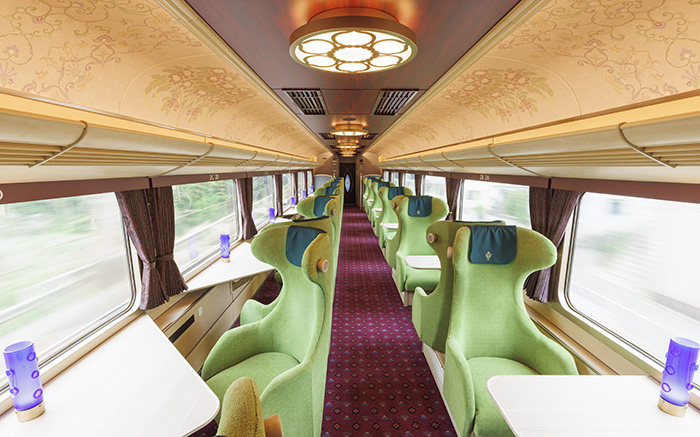
- Using JR (Japan Rail); Miyakoji rapid trains depart from JR Kyoto Station every 30 minutes for JR Nara Station. The rapid train takes about 45 minutes, while the local train takes approximately an hour. The ticket price for either option is 720 Yen. You can use Japan Rail Pass.
- Using Kintetsu Railway; Twice-hourly “limited express” trains take about 35 minutes to Kintetsu Nara station. You will need to reserve a seat and costs 1280 Yen. The other alternative is to take Sightseeing Limited Express “Aoniyoshi” which also takes about 35 minutes. This hourly train has window-facing lounge seats and is a perfect way to start your day trip to Nara from Kyoto especially for families and train enthusiasts. It has a small bar selling local snacks and drinks from Nara and even a small library. A ticket costs 1490 Yen. (750 Yen for children under 11).
| JR vs Kintetsu; Note that Kintetsu Nara station and JR Nara station are not at the same location. Kintetsu Nara station is closer to many attractions although you can still walk from JR Nara station. For this reason, I’d recommend taking Kintetsu Railway. I also recommend trying “Aoniyoshi” at least for one way, as it’s a fun experience and the price difference is minimal. |
Best Things to do in Nara
There are many things to do in Nara, but the key attractions are located within walking distance of either train station and around Nara Park. You can explore the area on foot. But if you have limited time or would like a local guide, consider joining a guided bike tour. Below are the recommended places to visit in Nara for your day trip from Kyoto.
Kofuku-ji
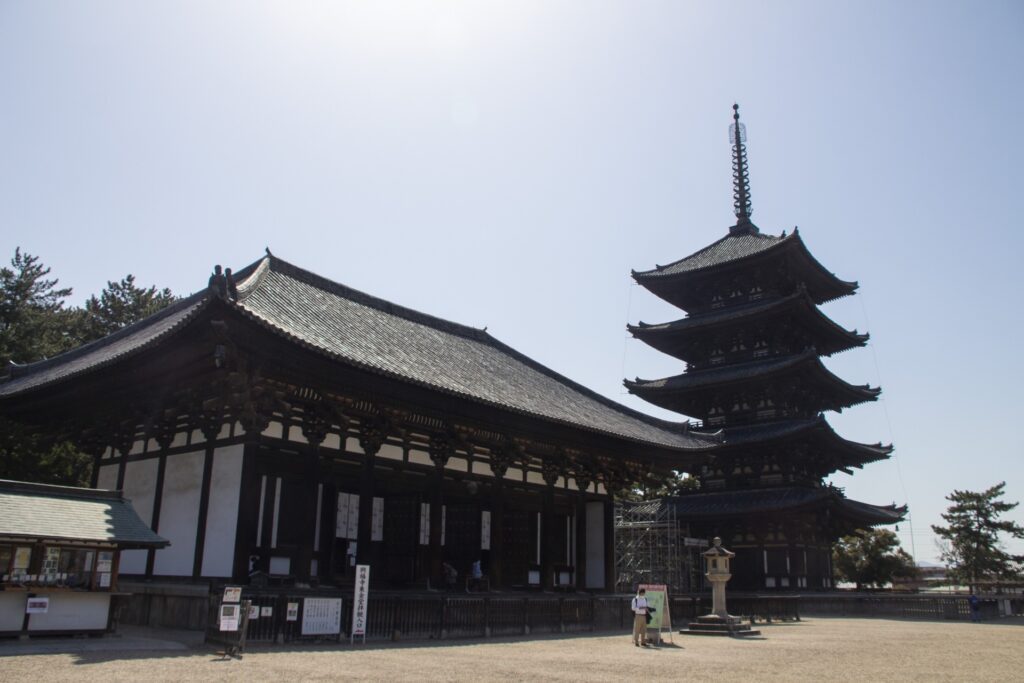
As you walk from either station towards the Nara Park, the first stop is Kofuku-ji temple on your right. It was originally established in 669 AD in Kyoto and later moved to Nara in 710 AD. One of the most iconic features of Kofuku-ji is its five-story pagoda, known as the “Gojunoto” Standing at 165 feet (50.1 meters) tall, it is the second tallest wooden pagoda in Japan and serves as a symbol of both the temple and the city of Nara. (the tallest is To-ji in Kyoto) The Tōkon-dō Hall (Eastern Golden Hall), reconstructed in 1426, is the main hall of Kofuku-ji and houses various important Buddhist statues. It holds a Yakushi Nyorai, the Buddha of healing. The current hall is a reconstruction from the Edo period. Kofuku-ji has the National Treasure Hall displaying items such as Buddhist art, sculptures, paintings, and ritual implements associated with the temple’s long history. You’ll also enjoy beautiful gardens in the area.
| 🦌 Deer in Nara 🦌 You will see many deer freely roaming in the park. They are generally friendly and even polite (bowing their heads in anticipation of receiving food.) They are considered sacred and are a symbol of the city as they’re considered divine messengers in Shinto beliefs. You can find vendors selling deer crackers (shika senbei) for you to feed them. Make sure to keep your own snack in your bag. While they’re generally very calm, exercise caution especially if you have children or during the mating season in the fall. |
Nara National Museum
After Kofuku-ji, keep walking toward the east through the park. The next stop is Nara National Museum. Established in 1889, the museum is one of the oldest in Japan. It focus on traditional Japanese art, with a particular emphasis on Buddhist art and artifacts. It houses a diverse range of sculptures, paintings, calligraphy, and other cultural treasures. If it’s too overwhelming, at least check out the Nara Buddhist Sculpture Hall. The display includes impressive large sculptures from the Asuka period to the Kamakura period, along with Buddhist sculptures originating from China. This collection stands as the most comprehensive assembly of Buddhist sculptures among all national museums in Japan. It has a nice museum shop too.
Todai-ji
After the Museum, cross the road and head towards the north to Todai-ji temple complex. Todai-ji was originally established in 738 AD by Emperor Shomu as a way to promote Buddhism and consolidate the power of the state.
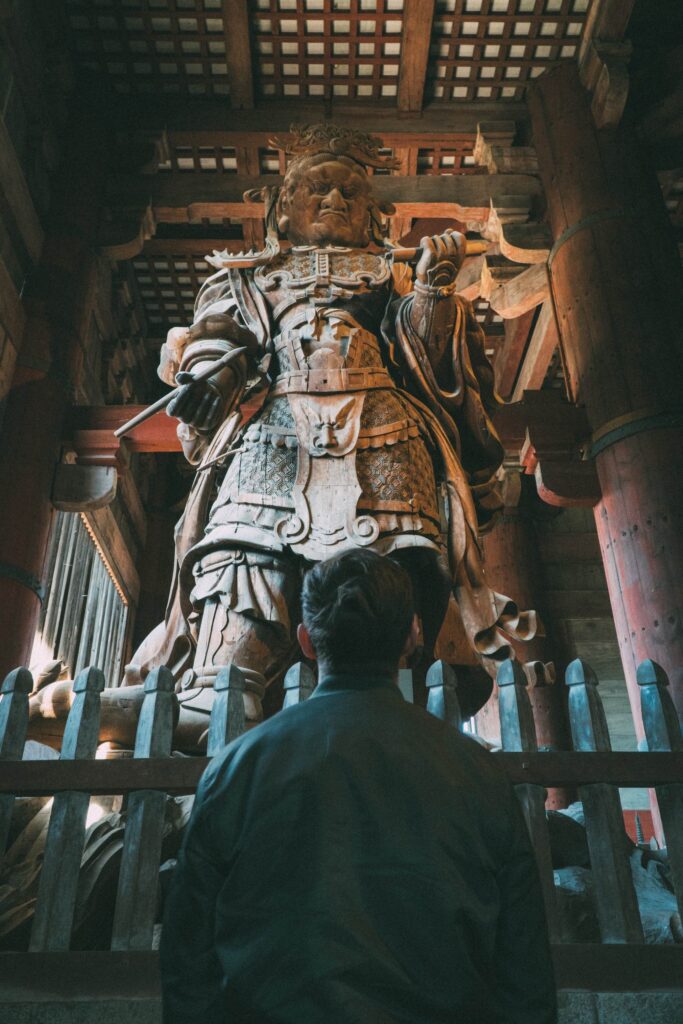
The Nandaimon Gate serves as the main entrance to Todai-ji. Guarded by two impressive statues of Nio, fierce-looking deities, the gate is a grand entry point that sets the tone for the majesty of the temple complex.
The Daibutsuden, housing the Great Buddha (Daibutsu), is one of the largest wooden buildings in the world. Constructed in the 8th century and rebuilt twice, the hall is a remarkable architectural feat and a UNESCO World Heritage Site. The Great Buddha is a colossal bronze statue of Vairocana Buddha. Cast in 746 AD, it stands at 15 meters tall and represents the cosmic Buddha. The statue is an iconic symbol of Japanese Buddhism and an awe-inspiring sight for visitors.
Also known as the Sangatsu-do, Hokke-do Hall enshrines a statue of Yakushi Nyorai, the Buddha of healing. It is another essential structure within the Todai-ji complex. The complex is large and there are many temples, gates and ponds around Todai-ji. If you have time, it’s a nice walk especially during the fall foliage season or the spring cherry blossom season.
Isuien and Yoshikien Gardens
Next to Todai-ji Museum are Isuien and Yoshikien Gardens. Isuien Garden, established in 1673, features a front and rear garden with a pond, stone lanterns, and seasonal plants. Adjacent to it, Yoshikien Garden, established in 1919, comprises three distinct gardens—Kito, Tateiwa, and Yoshiki—each representing different styles of traditional Japanese gardening. You can buy a combined ticket.
Kasuga Taisha Shrine
Go back towards the Nara National Museum and head further east. After passing the Manyou Botanic Gardens, you will come across Kasuga Taisha Shrine. It is a Shinto shrine renowned for its vibrant vermilion-lacquered structures and beautiful forest setting.
Founded in 768 AD, the shrine is characterized by its distinctive Kasuga-zukuri architectural style, featuring vermilion-lacquered wooden buildings with sloping roofs adorned with chigi (forked finials) and katsuogi (short horizontal logs). The approach to Kasuga Taisha is famous for its lantern-lined paths. Stone and bronze lanterns along the paths, numbering in the thousands, are donated by worshipers and create a magical atmosphere, especially during the lantern festivals in the summer.
🍵 Mizuya Chaya 🍵
There are some cafes and restaurants within the park. One of my recommendations is Mizuya Chaya, next to Kasuga Taisha. This is a small and charming teahouse offering Japanese sweets and noodles. The foods may be basic but the building is very charming and well worth a stop.
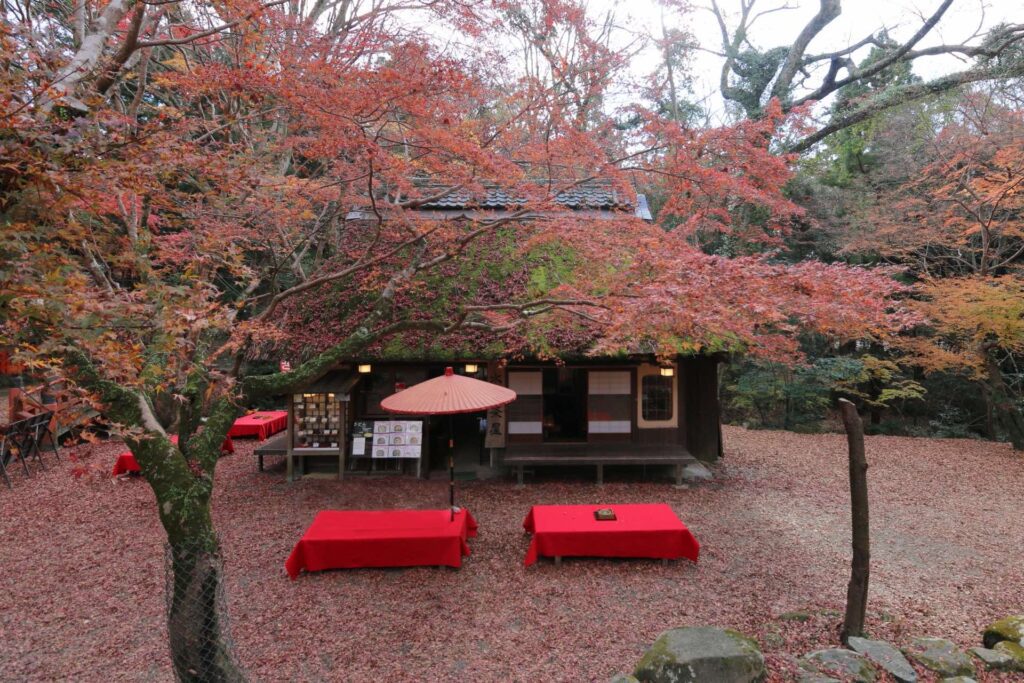
Naramachi
Naramachi is the historic district of Nara with many traditional merchants, tearooms, and souvenir shops. I recommend you spend some time strolling through Naramachi before ending your Nara day trip from Kyoto. Naramachi is located south of Kofuku-ji and covers a relatively large area. So, it’s a good idea to check the location of the shops or tea rooms you want to visit beforehand. I’ll list a few of my favourites places below. Also use the map above to navigate.
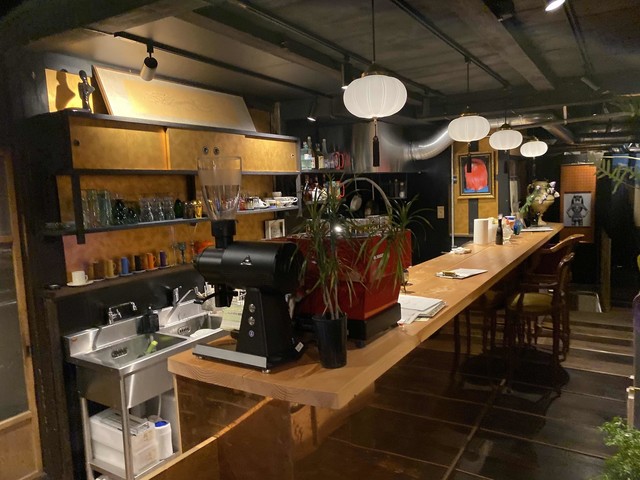
⬅️ 🍵 ROKKAN ROOM 🖼️
Renovated 140 years old building, this cafe space incorporates modernity from the early Showa period into its interior, preserving a sense of history and art. They offer, not only tea & sweets, but also a wide variety of art and unique souvenirs.
📝 coto mono 📎 ➡️
A very cute stationery zakka store, offering notebooks, pens, paper bags, etc. They have unique Nara deer print goods.
You’ll have to take your shoes off, but they have slippers for you to wear.

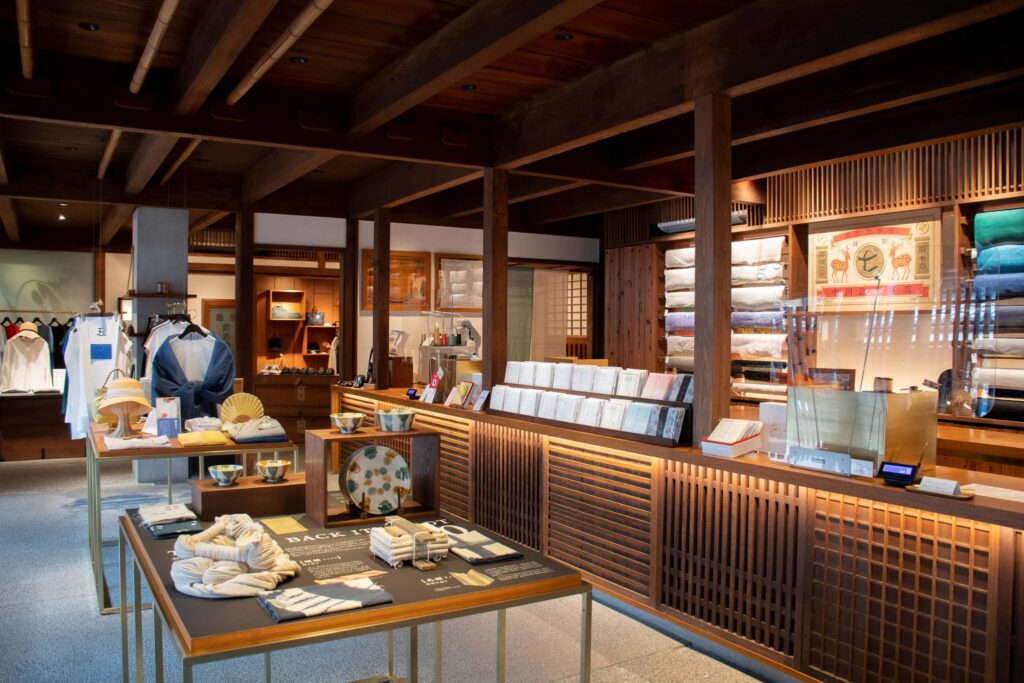
⬅️ 🪭 Nakagawa Masashichi Shoten Branch Souvenir Nara Sanjo 🦌
The unique souvenirs crafted by artisans, including original hand towels, plates, stationeries, and clothings.
👘 Akemitori 🇯🇵 ➡️
Original handmade Tea Towels, handkerchiefs, bags, and clothings. Unique Nara designs are perfect souvenirs.
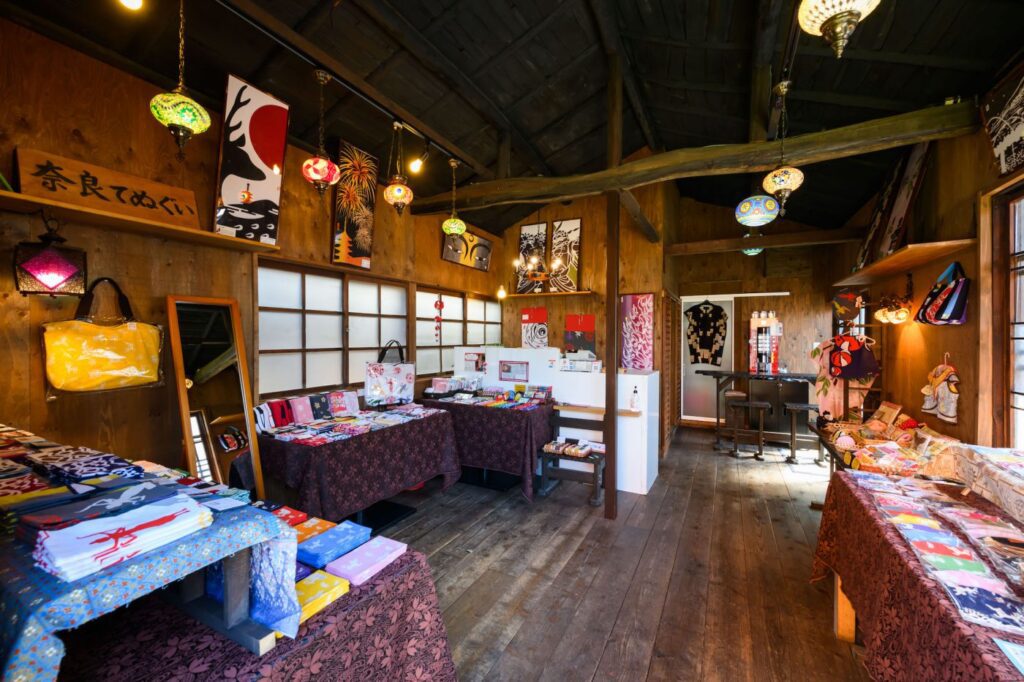
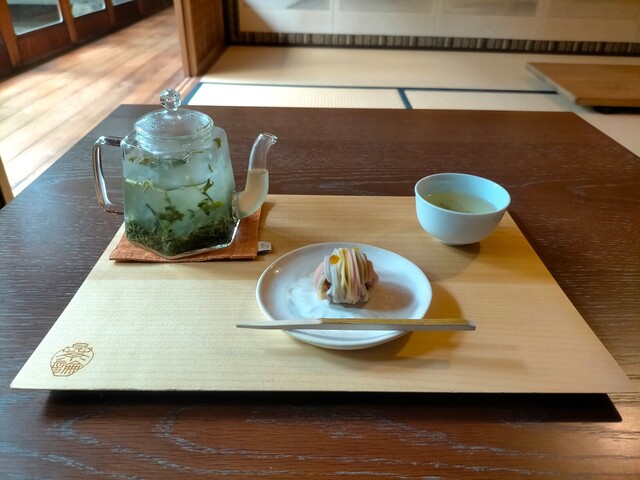
⬅️ 🍵 Salon Naramachi 🫖
This is a traditional Japanese tea room where you can sit on the tatami floor and enjoy the Japanese garden, while enjoying tea and sweets. They have workshop if you want to learn more about the tea ceremony.
Beyond Nara Day Trip from Kyoto
There are more things to see in Nara, but if you are making just a day trip from Kyoto, you may not have time to visit the following spots as they’re a bit out of town. But Yakushi-ji and Horyu-ji are well worth the trip, so I recommend staying overnight in Nara if the time allows.
Yakushi-ji
| How to get there; Take a train from Kintetsu Nara station to Yamato Saidai-ji station (2nd stop), then change trains for Nishinokyo station (2nd stop for local trains, 1st stop for rapid trains). From there, it’s a few minutes walk. It should take about 20 minutes in total and cost 300 Yen. Alternatively, you can take a bus from Kintetsu Nara station. Look for a bus bound for “Nara Prefecture General Medical Center” and get off at “Toshidai-ji” The bus leaves every 30 minutes and should take about 25 minutes depending on the traffic. |
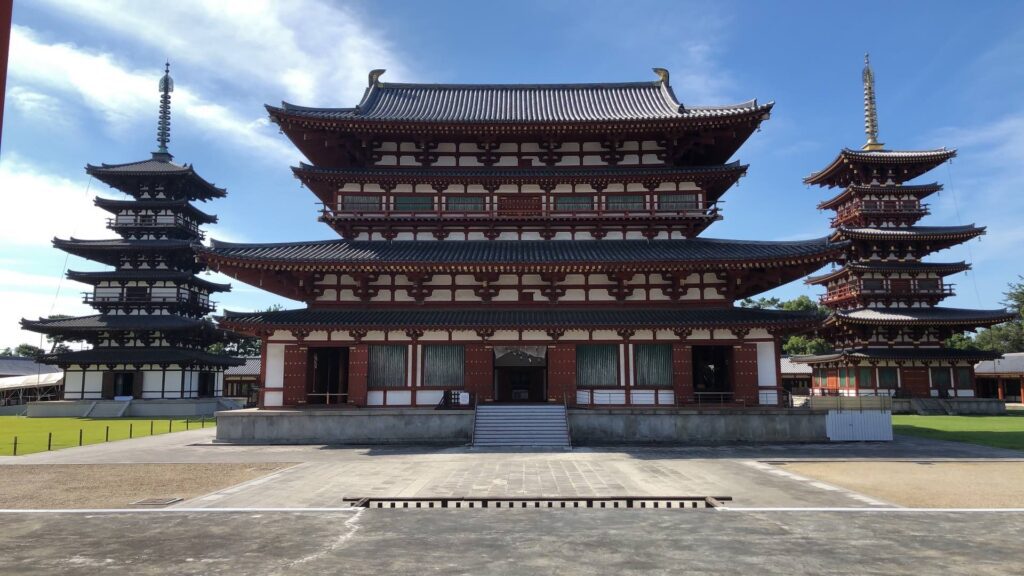
Yakushi-ji; The temple was originally established in 680 by Emperor Temmu as a prayer for the recovery of his Empress from illness. Unfortunately, the original structures were destroyed in fires and wars over the centuries, but the current Main Hall and East Pagoda date back to the reconstruction during the Nara period (710-794). The architecture reflects the Chinese Tang Dynasty style. The temple complex also includes beautiful gardens and other structures.
Horyu-ji
| How to get there; Take a Yamatoji line train from JR Nara station to Horyuji station. The trains depart every 15 minutes and should take about 10 minutes. From there you can take a local bus to Horyuji-mae bus stop. The bus journey takes about 5 minutes, or you can walk for 20 minutes. |
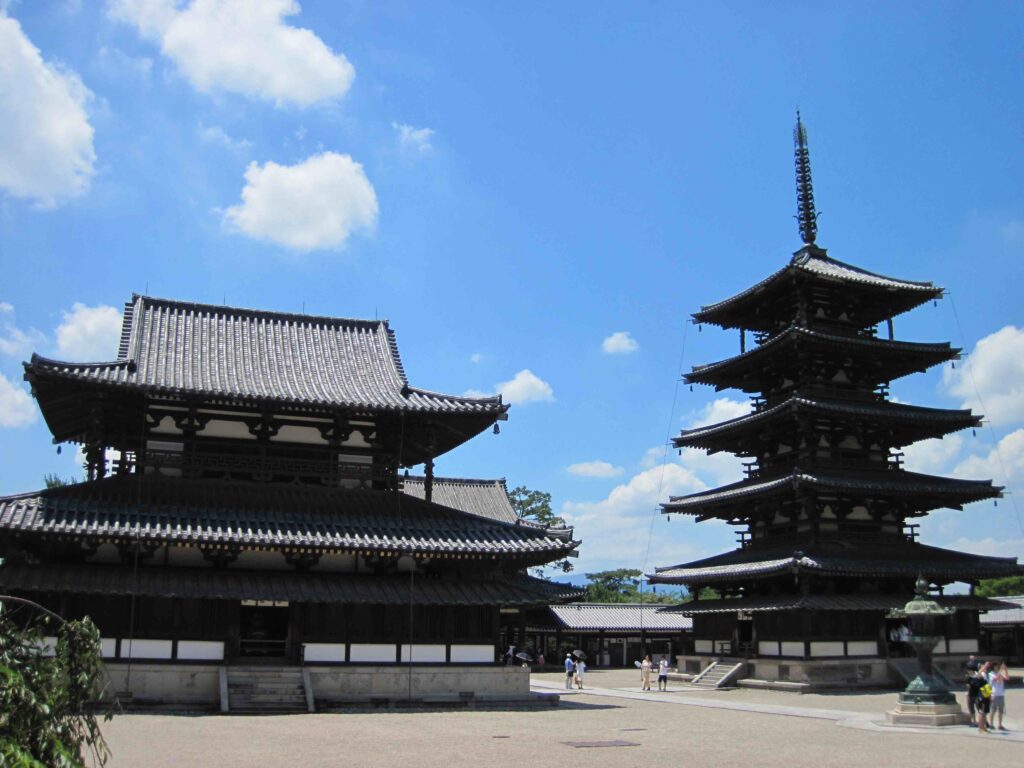
Horyu-ji; This is one of the oldest temples in Japan and is recognized as a UNESCO World Heritage Site. It was founded in 607 by Prince Shotoku, who played a key role in the introduction of Buddhism to Japan. The temple consists of a variety of buildings, including the Pagoda, which is considered the oldest wooden building in the world. The temple complex is divided into two areas: the Western Precinct (Saiin Garan) and the Eastern Precinct (Toin Garan). The Western Precinct includes the iconic five-story pagoda, the main hall, and other structures, while the Eastern Precinct houses the Yumedono (Hall of Visions), believed to enshrine Prince Shotoku’s remains. Horyuji is renowned for its collection of ancient Buddhist art and artifacts, including statues, paintings, and scriptures.
